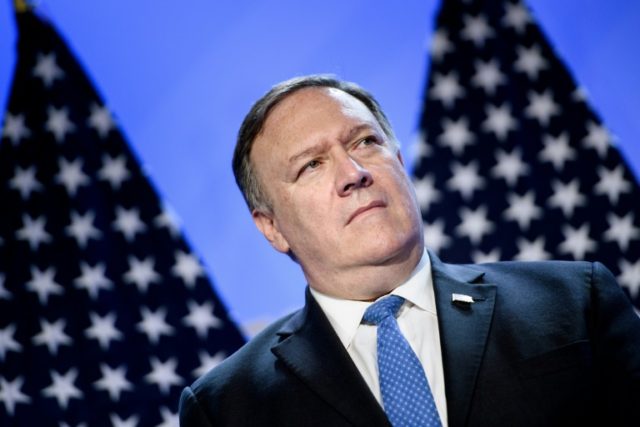Secretary of State Mike Pompeo told the Indo-Pacific Business Forum on Monday that business engagement and “free and open” trade are major elements of the Trump administration’s strategic vision for the region.
Although he mentioned China only in passing, Secretary Pompeo’s remarks included a clear warning to regional powers about the perils of partnering with Beijing.
As Pompeo noted, President Trump’s National Security Strategy envisions the Indo-Pacific region as a crucial element of American foreign policy and “one of the greatest engines of the future global economy.”
He then explained how the U.S. vision of a “free and open Indo-Pacific” contrasts with the agenda of a certain other superpower:
When we say “free” Indo-Pacific, it means we all want all nations, every nation, to be able to protect their sovereignty from coercion by other countries. At the national level, “free” means good governance and the assurance that citizens can enjoy their fundamental rights and liberties.
When we say “open” in the Indo-Pacific, it means we want all nations to enjoy open access to seas and airways. We want the peaceful resolution of territorial and maritime disputes. This is key for international peace and for each country’s attainment of its own national aims.
Economically, “open” means fair and reciprocal trade, open investment environments, transparent agreements between nations, and improved connectivity to drive regional ties – because these are the paths for sustainable growth in the region.
Pompeo made canny mention of how Asian powers disliked by China have prospered through their partnerships with the United States – especially the one China dislikes the most, Taiwan:
The great theme of our engagement is this: Where America goes, we seek partnership, not domination. After World War II we worked with Japan to forge a great alliance and stimulate an economic boom. South Korea in the ‘50s was ravaged by conflict. American assistance and investment in railways, ports, and other infrastructure helped create a foundation for our South Korean friends to recover, thrive, and build one of the world’s most prosperous economies – one that is now strong enough to aid other countries in their development.
In the ‘60s, we grew partnerships to address basic developmental needs. We supported transformational agricultural efforts, such as the Green Revolution, which forever improved farming of wheat and rice worldwide – and nowhere more than in the Indo-Pacific. We helped Hong Kong, Singapore, and other Southeast Asian economies rise from the ‘70s onward. In Taiwan, economic development went hand-in-hand with creating an open, democratic society that blossomed into a high-tech powerhouse. And America was proud to support foundational institutions like ASEAN, APEC, and the Asian Development Bank, among others.
Pompeo reviewed a number of major U.S. projects in the Indo-Pacific and pointed out that the United States is “the single largest source of cumulative investment” in the region, “larger than China, Japan, and the European Union.”
“To be clear, the U.S. government doesn’t tell American companies what to do,” he said. “We help build environments that foster good, productive capitalism. We help American firms succeed so that local communities can flourish and bilateral partnerships can grow.”
This led to the secretary’s strongest contrast between the United States and China. He did not call Beijing out by name, because he did not have to: “Our good faith as a partner is evident in our support of economic development that honors local autonomy and national sovereignty. The United States does not invest for political influence, but rather practices partnership economics.”
Pompeo acknowledged regional anxieties in light of President Donald Trump’s withdrawal from the Trans-Pacific Partnership (TPP), but said American investment in the region continues to grow while the administration works with partner nations to “craft better and higher-standard bilateral trade agreements.”
“It’s clear a big part of America’s international economic future is in this region,” he said. “So just as the United States made foundational contributions in the past, today I am announcing $113 million in new U.S. initiatives to support foundational areas of the future: digital economy, energy, and infrastructure. These funds represent just a down payment on a new era in U.S. economic commitment to peace and prosperity in the Indo-Pacific region.”
Pompeo and his audience were surely aware that China offers vastly larger sums of money for infrastructure to nations targeted for its campaign of debt imperialism – at the cost of lost sovereignty, permanent Chinese control over local markets, and perpetual debt to Chinese banks.
The secretary emphasized that the enormous infrastructure needs of the Indo-Pacific region dwarfed any amount of money that China can loan, citing an estimate of $26 trillion by 2030.
“No government, nor combination of governments, has that kind of money,” he said. “Only the private sector does. Only if countries make themselves welcoming to private investment will those trillions of dollars get off the sidelines, into their economies, and into productive enterprises that bring jobs and prosperity to their peoples.”

COMMENTS
Please let us know if you're having issues with commenting.